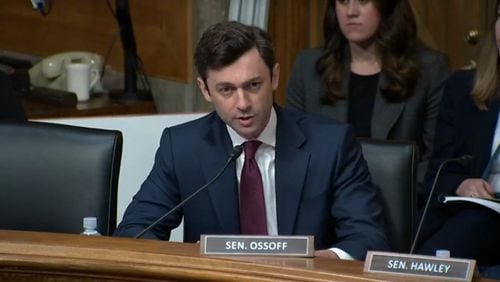The state has two major retirement systems, the Employees Retirement System and the Teacher Retirement System, that provide benefits to state workers and educators. Below is the breakdown in membership, as of the end of June:
Employees Retirement System
Employees
192,390 members*
47,180 current beneficiaries
Public school employees
131,9150 members*
16,994 current beneficiaries
Legislators
637 members*
260 current beneficiaries
Judges
869 members*
290 current beneficiaries
Teacher Retirement System
420,314 members*
113,066 currently receiving benefits
*Members includes retirees receiving benefits, people eligible for benefits but not yet receiving them, and current employees paying into the system.
Georgia’s pension system for state employees saw a $300 million decline in assets during the recently completed fiscal year as a volatile stock market and rising payouts to a rapidly retiring workforce affected the fund’s bottom line, according to a new report.
Reports released by the Department of Audits and Accounts this week also showed taxpayers are pouring an ever-increasing amount of money into the Employees Retirement System and the separate Teacher Retirement System, which pay benefits to more than 150,000 state workers and educators.
According to the reports for fiscal 2015, which ended June 30, the government increased its funding of ERS 20.7 percent last year and employer contributions to the teacher system rose 10.7 percent. Combined, the increases cost the government an additional $227 million last year.
If ranked against state agencies, the more than $1.9 billion the government puts into the two funds would be the fourth-highest expenditure in the state budget, behind only k-12 schools, public health care and, barely, the University System of Georgia.
That does not include the more than $500 million the state spent last year on retiree health care.
“It’s the cost of doing business, but it is something that seems to be getting a larger proportion of the budget every year,” said state Rep. Chuck Martin, R-Alpharetta, the chairman of the House Budget and Fiscal Oversight Committee. “We have to take a good hard look at it before it sneaks up on us.”
The rising costs of the programs haven’t been a surprise to budget writers, such as Senate Appropriations Chairman Jack Hill, R-Reidsville, who has seen extra money being added to the budget every year. “I don’t know any of it is unexpected,” he said.
The pensions are seen as a perk for attracting and retaining top teachers and staffers. Those in the program say teachers and government workers accept lower salaries than they could make in the private sector with the understanding that they will receive a decent pension when they retire.
The two funds are huge, with a “net position” or value of more than $80 billion combined.
Unlike in some other states, Georgia’s retirement systems have been well-funded. But in years when the financial markets drop or grow little, the numbers don’t work in the pension systems’ favor.
That is particularly true for the ERS. During fiscal 2015, the report says investment income dropped 76 percent after years of big gains. At the same time, benefits being paid to retirees increased 5.9 percent, or nearly $87 million.
The report said the number of retirees receiving benefits is increasing. Hill said those retirees are also living longer. So more state employees are retiring and receiving benefits longer at a time when the state payroll in most agencies is expanding little, if at all.
That has been true since around the time of the Great Recession, when state officials began lopping jobs off the state payroll.
“The ERS population is aging,” said Bill Tomlinson, a former state budget director and ERS member. “That is creating pressure on the system.”
In fact, there are 15,000 fewer “active members” — employees paying into the plan — than there were in 2008, said Jim Potvin, the executive director of the ERS.
In addition, less is paid into the system because new hires, as of 2009, are enrolled in hybrid 401 (k)-type plans rather than the standard pension program from which retiring workers draw benefits.
Martin is among those advocating for the Teacher Retirement System to offer a similar 401 (k) to teachers. While the issue stalled this spring, members of the governor's education funding task force said they planned to take another look at it.
A bill filed this year would implement a hybrid retirement plan for teachers hired after 2016 similar to the one in existence for state employees. Teacher advocacy groups fear that reduced contributions from future teachers would erode the TRS’ solvency.
The reports released this week may provide some ammunition to that argument.
At the same time the state workers’ plan dropped in value, the teachers’ system saw a gain of $360 million in the same poor stock market.
While school districts were shedding positions and teachers were getting out while the getting was good during the Great Recession, the improved economy and increases in both state and local school funding means many districts have been hiring again. So more teachers are paying into the retirement system.
“There is a huge difference in the makeup of the two systems,” said Hill, the Senate budget chairman. “For TRS, we continue to grow (enrollment). We are building more schools, hiring more teachers. We have more people working” and contributing to the fund.
“The opposite is true with ERS.”
About the Author







